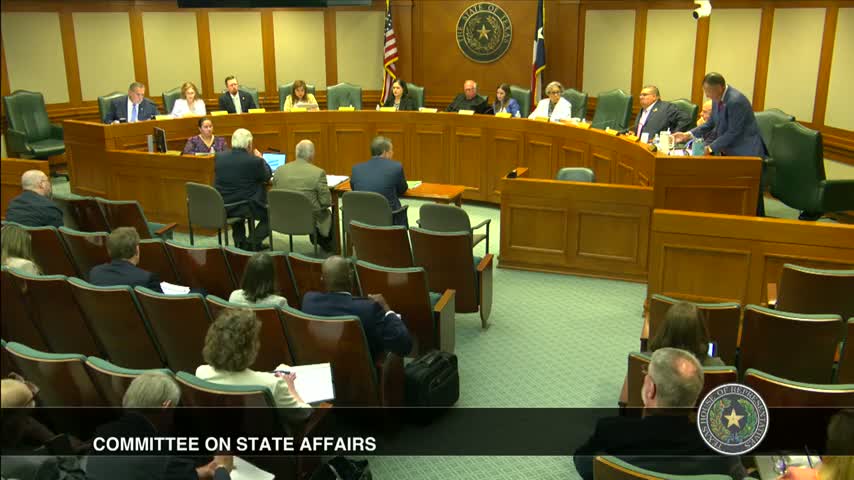Experts warn of storm risk amid population growth
August 16, 2024 | Committee on State Affairs, HOUSE OF REPRESENTATIVES, Legislative, Texas
This article was created by AI summarizing key points discussed. AI makes mistakes, so for full details and context, please refer to the video of the full meeting. Please report any errors so we can fix them. Report an error »

In a recent government meeting, discussions centered on the complexities of predicting storm-related risks and the implications for insurance models. A key example highlighted was Hurricane Harvey, which, despite its significant impact, struck a relatively unpopulated area, resulting in lower predicted losses compared to storms hitting more densely populated regions.
The conversation delved into the intricacies of risk assessment models, which estimate potential losses based on factors such as property values and storm size. The models categorize storms by their frequency and intensity, with a \"1 in 100\" year storm representing a smaller event, akin to a Category 1 or 2 hurricane. In contrast, a \"1 in 250\" year storm would be a more severe Category 3 or 4 event, while a \"1 in 500\" year storm could resemble Hurricane Andrew, which devastated Florida's property market in 1992.
Senator Taylor's legislative changes were also discussed, particularly the shift from a May to a \"Shell\" statute that established the \"1 in 100\" standard for insurance coverage. This decision was influenced by ongoing debates about the appropriate level of coverage for catastrophic events. The meeting underscored the evolving nature of risk assessment, which is increasingly influenced by population growth and urban development, particularly in areas like the Houston ship channel, identified as a significant growth zone.
Overall, the meeting highlighted the challenges faced by policymakers and insurers in navigating the unpredictable landscape of climate-related risks and the importance of adapting models to reflect changing demographics and environmental conditions.
The conversation delved into the intricacies of risk assessment models, which estimate potential losses based on factors such as property values and storm size. The models categorize storms by their frequency and intensity, with a \"1 in 100\" year storm representing a smaller event, akin to a Category 1 or 2 hurricane. In contrast, a \"1 in 250\" year storm would be a more severe Category 3 or 4 event, while a \"1 in 500\" year storm could resemble Hurricane Andrew, which devastated Florida's property market in 1992.
Senator Taylor's legislative changes were also discussed, particularly the shift from a May to a \"Shell\" statute that established the \"1 in 100\" standard for insurance coverage. This decision was influenced by ongoing debates about the appropriate level of coverage for catastrophic events. The meeting underscored the evolving nature of risk assessment, which is increasingly influenced by population growth and urban development, particularly in areas like the Houston ship channel, identified as a significant growth zone.
Overall, the meeting highlighted the challenges faced by policymakers and insurers in navigating the unpredictable landscape of climate-related risks and the importance of adapting models to reflect changing demographics and environmental conditions.
View full meeting
This article is based on a recent meeting—watch the full video and explore the complete transcript for deeper insights into the discussion.
View full meeting
